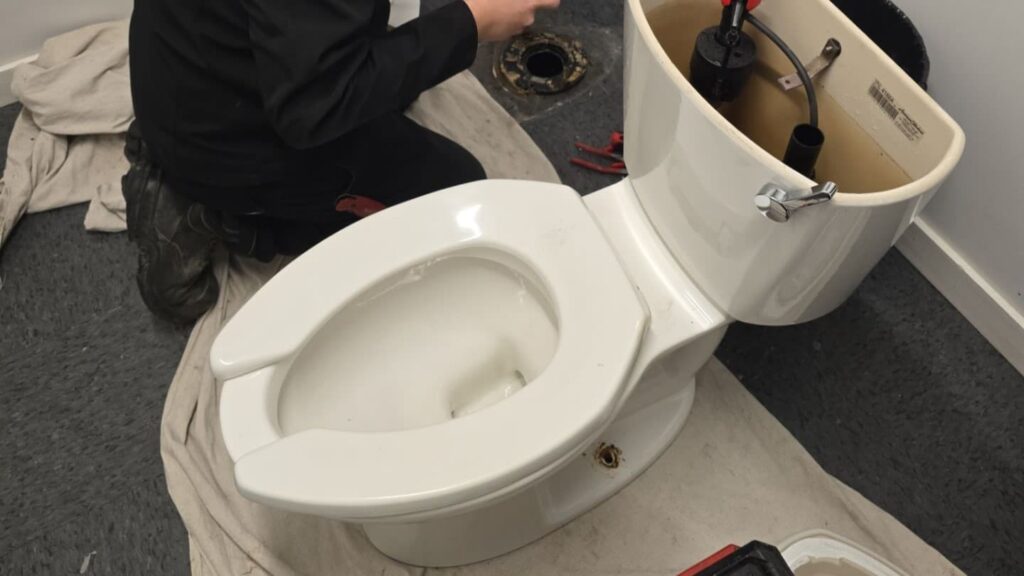Gas Leak: Why It Happens and What to Do
Gas leaks are a serious safety hazard that can lead to devastating consequences if not addressed promptly. From explosions and fires to health complications…

Toilets overflowing can be a stressful situation for anyone. It’s important to stay calm and know the steps to take when this happens. An overflowing toilet can cause water damage and create a mess, but with the right knowledge, you can manage the situation effectively. This guide will help you understand why your toilet might overflow and what actions to take to resolve the issue.
There are several common reasons why a toilet may overflow. Understanding these can help you identify the problem quickly:
By identifying the cause of the overflow, you can take the right steps to fix the problem. If you need to figure out what’s causing the issue, it might be time to call a professional plumber.
When your toilet starts to overflow, quick action is essential. Here’s what you can do to manage the situation:
The first step is to stop more water from entering the toilet. Lift the toilet tank lid and push the flapper down to prevent water from flowing into the bowl. You can also turn off the water supply by locating the valve behind the toilet and turning it clockwise. This will help prevent further overflow.
Use a bucket or rag to remove excess water from the toilet bowl carefully. Pour the water into a larger bucket to avoid spreading the mess. If water spills onto the floor, use towels or a mop to soak it up. Wearing gloves is advisable to protect your hands from any bacteria.
If you suspect a clog, a plunger can be your best friend. Place the plunger over the drain hole and create a seal. Push down firmly, then pull up quickly to create suction. Repeat this process for about 15 to 20 seconds. If the clog persists, you might need to use a plumbing snake. Insert the snake into the toilet bowl and twist it to break up or remove the blockage.
After attempting to clear the clog, check the water level in the tank. If it’s too high, adjust the float to lower it below the overflow tube. This will help prevent further problems.
Once the blockage is cleared, turn the water supply back on and flush the toilet. Observe if the water flows correctly and the bowl empties properly. If everything looks good, you’ve resolved the issue!
Finally, it’s crucial to disinfect the area thoroughly. Use a disinfectant cleaner on the toilet, floor, and any surfaces that may have come into contact with the overflow. This will help prevent the spread of bacteria and keep your bathroom safe.
Prevention is always better than dealing with an overflow. Here are some tips to keep your toilet functioning properly:
Only flush toilet paper and human waste. Avoid flushing items like wipes, paper towels, and feminine hygiene products, as these can cause clogs.
While many toilet issues can be fixed with simple tools and knowledge, sometimes it’s best to call a professional. If you’ve tried plunging or snaking the toilet and the overflow continues, it’s time to get help. A professional plumber can diagnose and fix complex problems that may be beyond your expertise.
At TaskPro, we provide 24/7 emergency plumbing services throughout British Columbia, including Surrey, Langley, and Richmond. Our experienced plumbers will quickly get to the root of the issue and help restore your toilet to proper working order. Contact us today!
Yes, a toilet can overflow due to reasons other than a clog. An improperly adjusted float can cause the tank to overfill, while a blocked vent pipe can prevent air from flowing properly, leading to overflowing.
Absolutely. If the toilet’s components are malfunctioning, such as broken parts that disrupt water flow, it can lead to constant running and eventually overflowing. Addressing these issues promptly is essential to prevent water damage.
Yes, an overflowing toilet can cause significant damage to your home. It can lead to water damage, mold growth, and pose health risks due to contamination. Quick action is crucial to mitigate these risks and protect your home.
Share this Guide
Gas leaks are a serious safety hazard that can lead to devastating consequences if not addressed promptly. From explosions and fires to health complications…
Septic tanks are a vital component of wastewater management systems, particularly in areas where municipal sewer systems are unavailable. These underground structures treat and…
Choosing the right toilet for your home is more than a simple decision; it’s an investment in comfort, efficiency, and functionality. The type of…